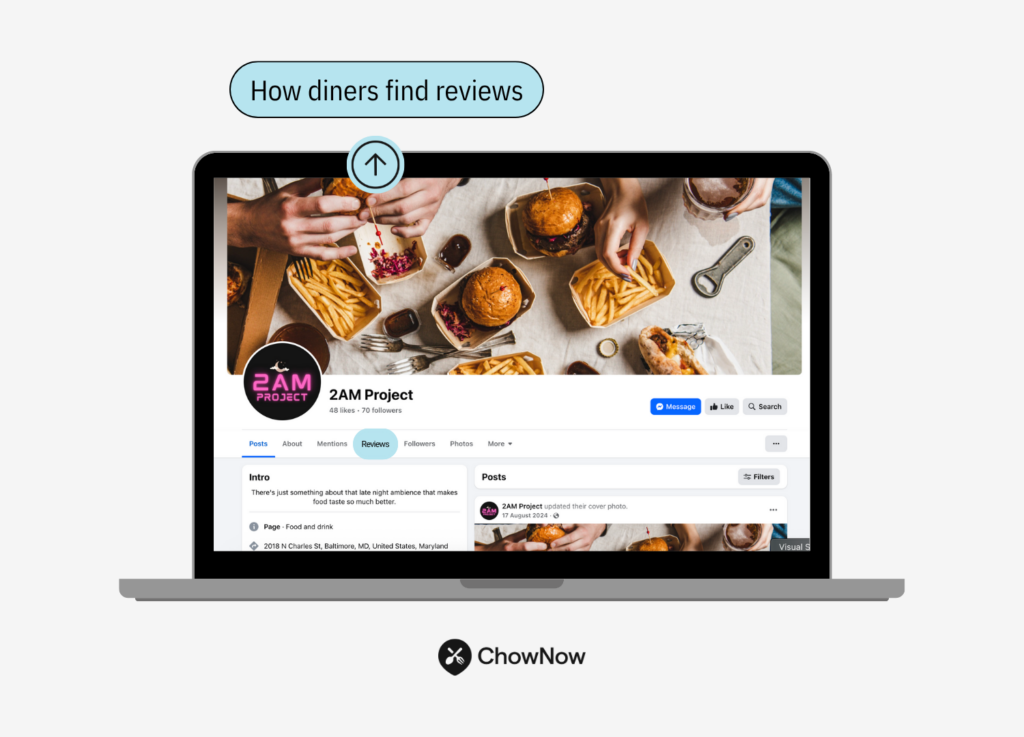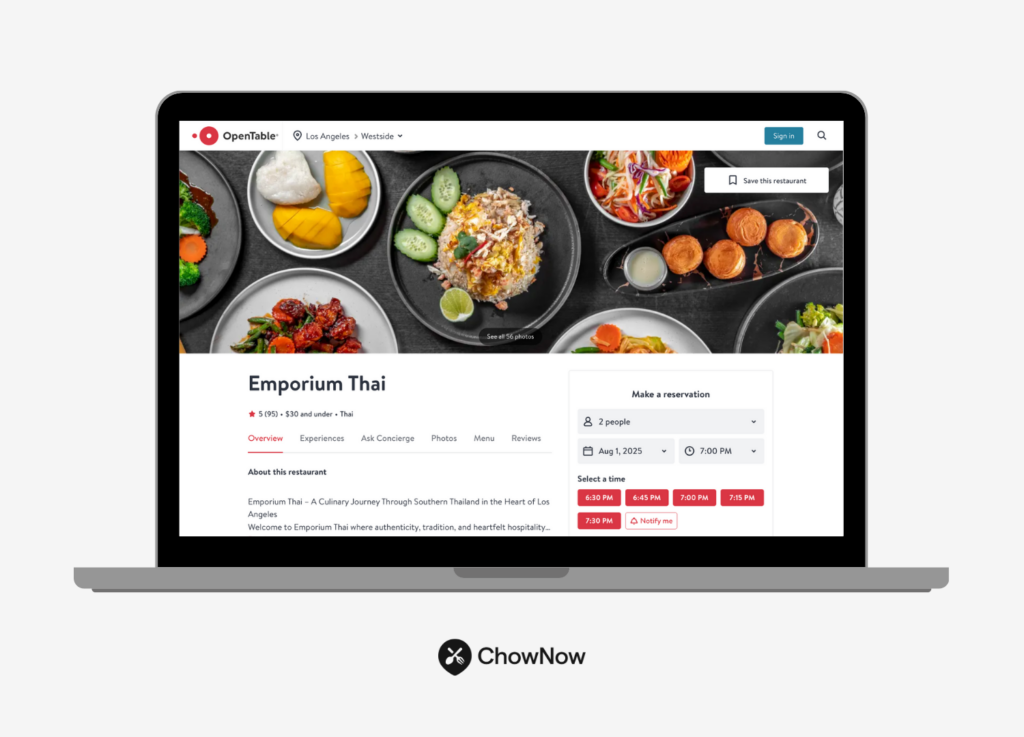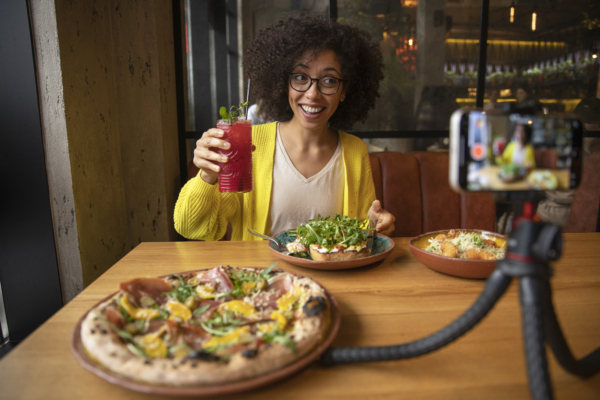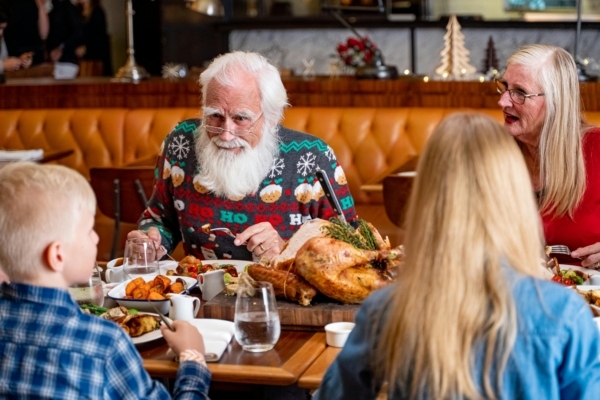The 6 Best Restaurant Review Sites (And How To Use Them)

Restaurant review sites aren’t just for diners—they’re also savvy tools for restaurant operators to gather customer feedback and help control the narrative around their dining experience.
The problem is, with dozens of restaurant review sites online, which ones should you focus on to give you the most impact, and how can you optimize each site to work in your favor?
With 91% of people reading reviews regularly and 57% of people looking for reviews on specific restaurants, it’s worth spending the time to learn how each platform works and performs.
But again: how do you know which ones deserve your attention?

We did the hard part for you and narrowed it down to a list of the six best restaurant review sites so you can improve your online reputation and attract more customers.
In this article, you will learn:
- What diners actually see on each restaurant review site before they make a decision
- The pros and cons of each platform from a restaurant operator’s perspective
- Specific actions you can take to stand out and get better results from each site
You can also watch this quick video comparing the top 6 restaurant review sites and where to focus for the best results.
Let’s start with the platform 81% of people turn to when evaluating a local business: Google.
1. Google Business Profile

If you only have time to focus on one restaurant review site, or don’t know where to start, make it this one.
Your Google Business Profile (GBP) is what shows up when someone searches your restaurant’s name on Google or searches the cuisine type you serve in your area. Being listed on Google Business Profile is essential for increasing your restaurant’s reach and discoverability.
For example, let’s say you own a Thai restaurant, and someone searches “best thai restaurant near me,” your Google Business Profile is what shows up in the map pack and sidebar.
Think of it as the online hub of your restaurant’s online reputation, and it’s often the first impression you make in local search results and Google Maps. Managing your restaurant’s online reputation through GBP is crucial, as it directly impacts how potential customers perceive your business.
What diners first see:
After clicking on your GBP in the sidebar, customers will see your restaurant listing, including photos, hours, reviews, ratings, contact information, your location, menu, and links to your restaurant website and online ordering system.
Google also pulls in data like price range, categories (like “brunch” or “outdoor patio”), your star rating, busy times, and snippets from reviews. Ratings and user reviews are prominently displayed, influencing diner decisions and affecting your restaurant’s visibility on platforms like Google Reviews and Foursquare. High ratings and positive feedback from users can significantly boost your reputation and attract more customers.
If you’re managing your Business Profile, diners will see your best photos and positive reviews, but if you’re not on top of it, random user photos, negative reviews from users, and outdated info might be the first thing diners see.
Pros:
- Completely free and has a massive reach—Google still dominates search
- Connects directly to Google Maps
- A well-optimized listing improves your visibility in local search results, helping you attract more customers and reach potential customers
- Lets you update info, post events or specials, and respond to reviews
- Helps drive traffic even when people aren’t searching by name
- Most diners trust Google reviews when deciding where to eat
Cons:
- Anyone can add or edit your listing if your restaurant is unclaimed
- Outdated information (hours, photos) can hurt your online reputation and influence customer behavior
- You have limited control over what shows up first
- Google support is not known for being responsive
- Negative or unmoderated reviews can hurt your restaurant’s reach and have a significant impact on your reputation and customer behavior
- It requires regular updates to stay accurate and useful.
How to optimize it:
- Claim your listing (if you haven’t, use this link to get started) and fill out every field: hours, website, menu link, service options, etc.
- Add high-quality photos. Google gives priority to listings with more visuals
- Ask happy diners to leave reviews and responding to every one, good or bad—responding demonstrates strong customer engagement and shows you’re active and paying attention
- Use Google Posts to highlight events, seasonal items, or limited-time offers to further boost customer engagement
- Make sure your categories are accurate (e.g., “family-friendly,” “vegetarian options”)
2. Yelp

Yelp may not have the universal reach that Google does, but in big cities, like Los Angeles and New York, it still carries serious weight in helping diners find a place to eat. Yelp is consistently ranked among the top restaurant review sites and is considered one of the most influential traditional review sites.
It’s also one of the most likely restaurant review sites to show up when someone searches a specific food type or category ( “date night,” “dog-friendly,” etc.).
What diners see first:
When someone lands on your restaurant’s Yelp page, they’ll see your star rating, hours, location, link to your website, prominent photos (either user or operator-generated), and popular menu items with pictures and the number of reviews on individual dishes.
Below that, you’ll see a “what’s the vibe” section where customers can post images of inside, outside, food, and anything else they find interesting. Diners can also view tips and recommendations left by friends and other users, which can influence their decision.
Pros:
- Huge visibility in city searches and tourist-heavy areas
- Powerful filters that help you show up in the right context
- Yelp Elite reviewers, often regarded as local experts, can boost your credibility
- Lets you manage your listing and respond directly to reviewers
- Offers paid tools like profile customization and ad placement
- Strong SEO presence—Yelp listings rank well on Google
Cons
- Yelp doesn’t let you remove or hide reviews, even if they’re inaccurate
- The algorithm sometimes filters out legitimate positive reviews
- Some restaurant owners feel pressured to buy ads to improve visibility
- Some features are locked behind a paid business account
How to optimize:
- Claim and fully complete your restaurant listing
- Upload current photos, especially of your food, interior, and menu
- Respond professionally to every review, even the tough ones
- Encourage happy guests to leave reviews (Yelp discourages “asking,” so research the best approach)
- Use keywords in your business description that reflect your experience (e.g., “cozy brunch spot,” “vegan-friendly,” “great for kids”), and highlight your strong rating system to help diners make informed decisions.
3. TripAdvisor

If your restaurant is in a tourist-heavy area, near a landmark, hotel zone, or vacation destination, TripAdvisor matters more than you think.
For people visiting new areas, TripAdvisor acts as a city guide, helping travelers discover local restaurants and attractions.
It’s the platform people use when they’re unfamiliar with the area and want a safe, reliable pick.
These diners aren’t comparing you to their go-to neighborhood spot; they’re looking for the right restaurant based on proximity, vibe, and a few recent reviews.
What diners first see:
When first landing on the site, they’ll see a list with your restaurant and others like it, with filters for “establishment type,” “meal type,” and “cuisines.” Diners can also search for restaurants in specific locations and explore different types of dining experiences.
After clicking on your restaurant, they’ll see your rating, number of reviews, photos, hours, address, phone number, link to your website, and an about section with a features list.
Pros:
- Strong presence among tourists, travelers, and hotel guests
- Good for drawing foot traffic in areas with high visitor volume
- Free tools for managing your page and uploading your own images
- Often less competitive than Yelp or Google in local SEO
- Great for building a positive online reputation with out-of-town guests; new restaurants can quickly gain visibility and credibility with tourists on TripAdvisor
Cons
- If you rely more on locals than tourists, it may not drive as much traffic—TripAdvisor is more of a visitor’s tool
- Inactive profiles with old photos or unanswered reviews can make your restaurant seem out of date
- Rankings are heavily influenced by recency and review volume, which can fluctuate
How to optimize:
- Make sure your restaurant listing is complete and accurate
- Add great photos of your space, dishes, and vibe
- Encourage visitors to leave reviews right after their meal, as online restaurant reviews are crucial for building trust and attracting more diners
- Keep your business description current and clear—focus on what sets you apart for travellers (e.g., “fast lunch near the art museum”)
- Track and respond to feedback to show you care, especially if something went wrong
4. Facebook

Facebook may not be the first platform that comes to mind when you think of restaurant reviews, but it’s still one of the most widely used social media platforms in the world, and a lot of people still use it to look up restaurants, check photos, and read quick customer feedback. Most people use Facebook to look up company pages and check restaurant information before making a decision.
It’s especially useful for staying connected to your regulars and building credibility in your local community.
What diners first see:
Landing on your Facebook page, diners see a background photo, profile photo, and an intro panel that has all of your information like, address, phone number, link to your menu and website, special features (outdoor seating, dog-friendly, etc.), price range, and star rating with number of reviews.
To read your reviews, customers click on the “reviews” tab in the toolbar.
Pros
- Great for maintaining visibility with loyal and repeat guests, engaging loyal customers and encouraging them to share their experiences
- Easy to post updates, events, and promos in real time
- Lets you interact with your customers and respond to reviews
- Tagging, shares, and check-ins can expand your restaurant’s reach organically
Cons
- Less useful for restaurant discovery compared to Google or Yelp
- You need to actively maintain it, or it quickly looks outdated
- Reviews are less structured, so they may not be as impactful
How to optimize it:
- Keep your business page up to date with hours, location, contact info, and links
- Post regularly—photos of your food, behind-the-scenes moments, or upcoming specials
- Respond to comments and reviews to build trust and show personality
- Use Facebook’s event tools to promote things like tastings, live music, chef’s menus curated by our chefs, and special opportunities to dine at your restaurant
- Encourage happy guests to check in, share photos, or tag you in posts—it boosts visibility fast
5. OpenTable

OpenTable is both a review platform and a booking engine, which means guests can find you, read reviews, and reserve a table in one seamless process. Diners can also search specifically for allergy friendly restaurants and read reviews that highlight food quality, helping them make informed decisions.
Usually, when people visit OpenTable, they already know what kind of restaurant they’re looking for; they just need to review the handful of restaurants that match that description.
If your restaurant is full-service and reservations are a core part of your operations, especially for dinner, weekends, or special occasions, OpenTable helps you manage bookings and capture guests who are ready to commit.
What diners see first:
When someone finds you on OpenTable, the first thing they’ll see is your available time slots, followed by your star rating, photos, and a summary of recent reviews.
The platform also highlights keywords like “romantic,” “great wine list,” or “good for business meetings,” based on guest feedback.
And because people book directly through the app, your visibility depends on how well your listing converts browsers into bookings.
Pros:
- Integrated reservation system with real-time availability
- Trusted by diners looking for a more upscale or planned-out dining experience
- Guest reviews tend to be more thoughtful and detailed
- Syncs with your front-of-house ops, especially if you’re already using OpenTable software
Cons:
- Not as discovery-driven as Google or Yelp—you have to earn visibility through bookings
- Can be pricey (OpenTable charges fees per cover, which can add up fast), depending on your volume and features
- Limited audience if you’re more casual, counter-service, or walk-in focused
- Without active management, your listing can feel bare
How to optimize it:
- Upload high-quality, recent photos—especially of the interior and plated meals
- Write a strong, specific description that reflects your atmosphere and food focus
- Keep your reservation availability realistic—showing “nothing available” too often can hurt
- Encourage guests who booked through OpenTable to leave a review after their visit
- Respond to reviews directly—OpenTable guests tend to read both reviews and replies
6. Eater

Eater isn’t a typical restaurant review site, but if your restaurant gets featured on a neighborhood map, a “Where to Eat Right Now” roundup, or a full editorial write-up, it can have a huge ripple effect. Being included on Eater can help build a positive reputation for your business, even though most restaurants are not featured.
It’s where food bloggers, journalists, and customers go to see what’s trending in their city or neighborhood.
A single mention can drive serious traffic, especially in major markets like NYC, LA, or Chicago.
What diners see first:
When someone lands on an Eater article that features your restaurant, they’re seeing you in a curated, editorial context, often alongside other standout spots.
These write-ups typically include a quick description, a highlight dish, and a link to your website or restaurant listing, giving diners a reason to check you out and try something new.
Pros:
- High editorial trust. Readers take Eater’s recommendations seriously
- Can dramatically raise your profile among food-savvy locals and travelers
- Great for word-of-mouth, PR, and attracting food bloggers or influencers
- Helps with SEO and local search visibility when you’re linked or mentioned
Cons:
- You can’t control or claim your listing—coverage is entirely at the editors’ discretion
- Not every city has a local Eater branch
- Hard to predict or engineer inclusion without strong PR or buzz
How to optimize it:
- Focus on creating standout dining experiences and unique menu items that spark conversation
- Invest in great photos and branding. Eater editors and writers often browse Instagram before deciding who to feature
- Build relationships with local food writers and PR professionals
- If you do get featured, amplify it; share the article on your social channels, add it to your website, and make sure it’s visible on your Google or Yelp page
Which Review Sites Deserve Your Attention?
The answer is all of them, but if you find yourself stretched too thin (and what restaurant owner isn’t?), then start at the top of the list and work your way down, moving on to the next as you master the previous.

Restaurant Review Sites Frequently Asked Questions
What are the best restaurant review sites?
The best restaurant review sites for restaurant operators to focus on include Google Business Profile, Yelp, and TripAdvisor. Each platform offers unique benefits, Google dominates local search, Yelp excels in large cities, and TripAdvisor is great for tourists.
Why are restaurant review sites important?
Restaurant review sites influence where people choose to eat. With over 90% of consumers reading reviews before dining out, these platforms shape first impressions, build credibility, and directly impact your restaurant’s online visibility, foot traffic, and reputation.
How can I improve my restaurant’s presence on review sites?
To improve your presence, start by claiming and optimizing your listings with accurate info, high-quality photos, and regular updates. Respond professionally to reviews, both good and bad, and encourage satisfied customers to leave feedback. Tailor your strategy based on each platform’s strengths.
Which review site should I prioritize first as a restaurant owner?
If you’re short on time, start with Google Business Profile. It’s free, widely used, and appears prominently in local search and Google Maps. A well-maintained Google listing can drive significant traffic, even from diners who don’t know your restaurant by name.











